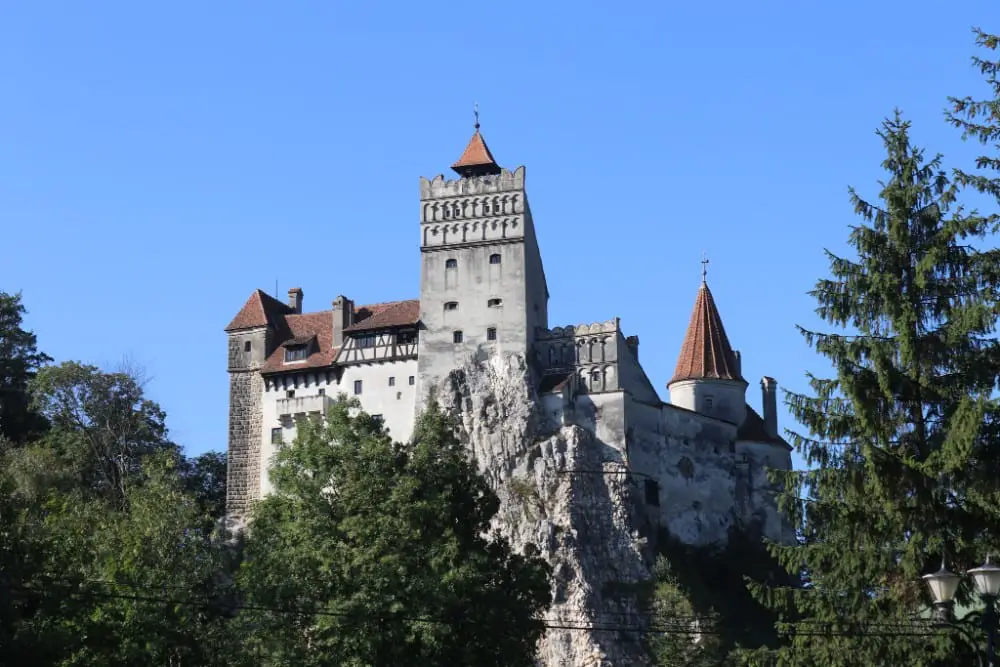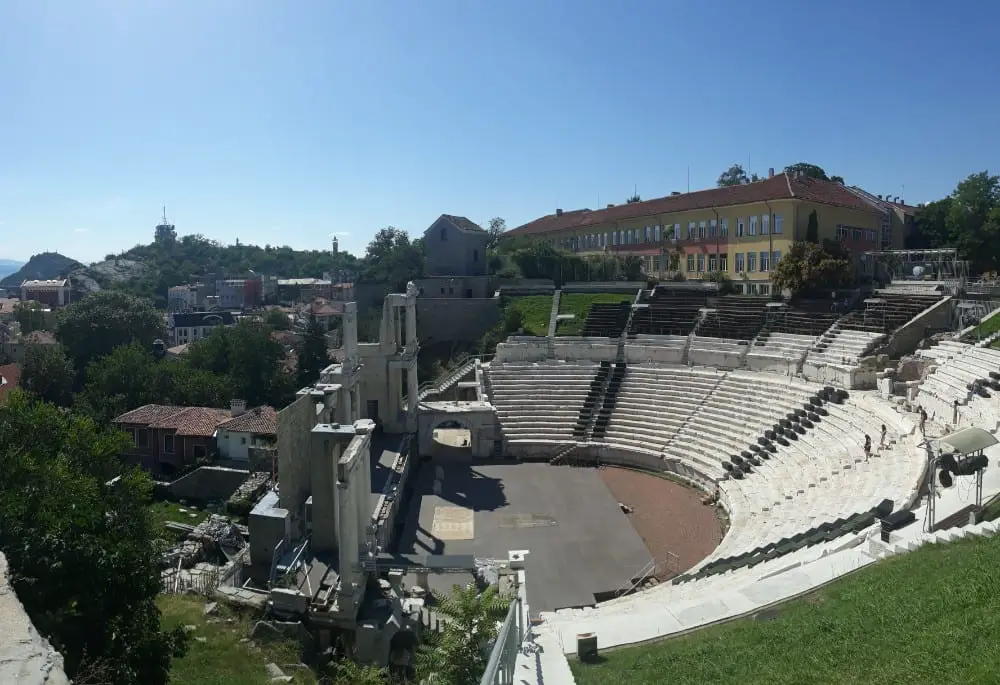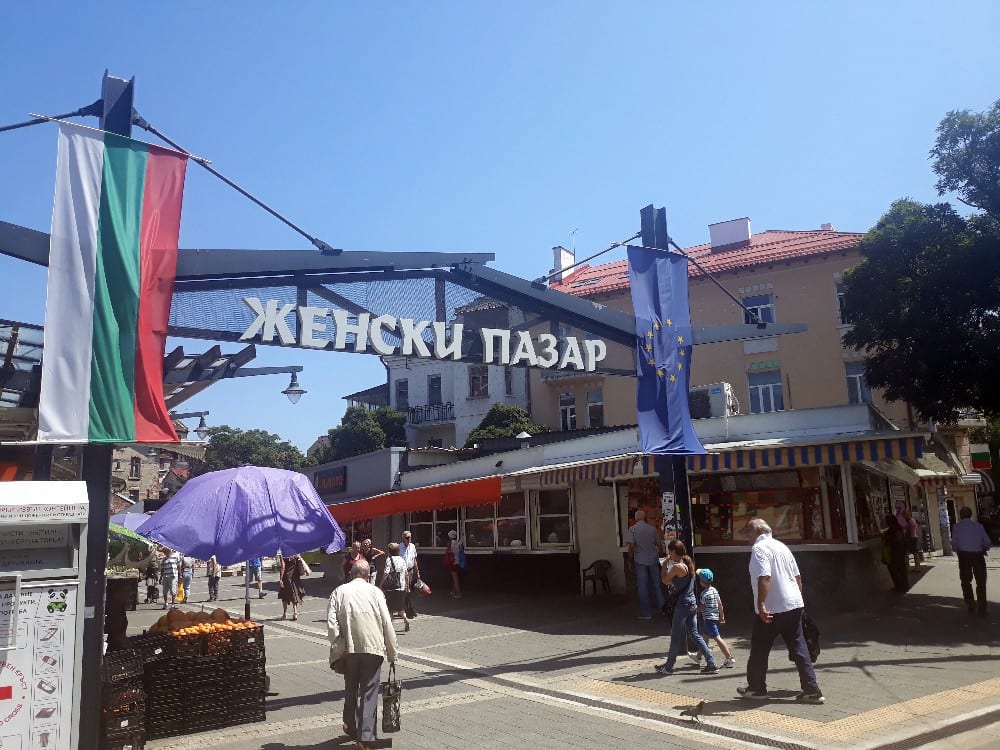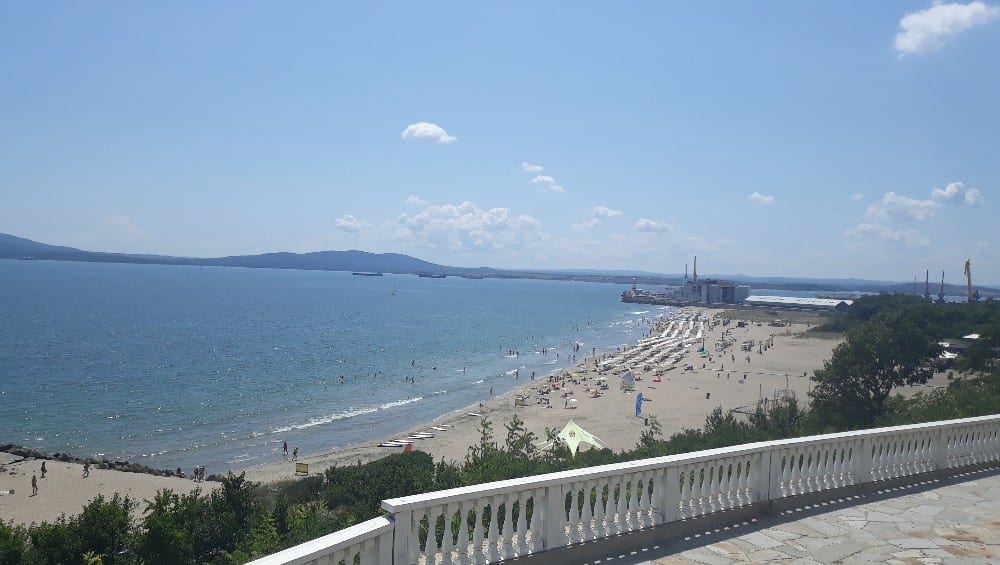Our month-long Hungary, Bulgaria and Romania backpacking route explores three of Europe’s most affordable countries. Starting in Budapest and ending in Sofia, this itinerary takes in historic cities, Transylvanian castles, coastal resorts and mountain retreats. It features the travel highlights of all three countries and can easily be expanded or shortened to suit your preferences.
Table of Contents
- Backpacking Hungary, Romania & Bulgaria – A 5 Week Itinerary
- Hungary Backpacking Route
- Romania Backpacking Route
- Bulgaria Backpacking Route
- Hungary, Bulgaria & Romania Backpacking Tips & FAQs
Hungary, Bulgaria & Romania Itinerary Overview
How long does it take to backpack Hungary, Bulgaria & Romania?
For the itinerary listed below, we’d suggest allowing roughly five weeks with Romania likely to take up the most time. Covering 238,000 km2, it is roughly the same size as the UK and is larger than Bulgaria and Hungary combined. All three countries have decent rail and bus networks so getting around shouldn’t be a huge problem although travel does still generally take more time than it would to cover an equivalent distance in more western or central parts of Europe where there are faster trains and better roads.
How much will it cost?
Possible Shoestring Budget for this Itinerary: £1000 €1100 $1200
This is based on shoestring travellers, staying in hostel dorms and taking the cheaper transport options. It allows for some extra activities and trips and a few nights out providing you are selective by choosing more affordable bars and/or night clubs. You will need discipline to stick to this budget though and you could easily spend double this if you are looking to party most nights and do lots of extra activities and trips.
April 2020 prices & exchange rates are used for these figures. There may be slight variations depending on when you visit – particularly if you do so during the summer months when prices may rise slightly in the coastal areas and more popular destinations such as Budapest. Read our article on the cost of travel in Europe to see how these countries compare to others in the continent.
Backpacker Jobs in Hungary, Bulgaria & Romania
There are plenty of short-term jobs you can take that will help you extend your trip in the region and get a better feel for daily life for people in this part of Europe. From hostel roles to working on summer camps for children, check out Worldpackers for the latest opportunities. If you aren’t registered with them, you can use our Worldpackers sign up offer for $10 off registration.
Travel Insurance
The cost of travel insurance isn’t included in the budget figures above. You can get a quote in less than a minute from Heymondo who provide well reviewed international travel insurance for backpackers from all over the world.
Backpacking Hungary, Romania & Bulgaria – A 5 Week Itinerary
Our itinerary starts in the wonderful city of Budapest, the Hungarian capital. Many visitors to Hungary don’t go anywhere else but that’s a shame because the country has plenty more to offer and if you follow our Hungary backpacking route, you will head east taking in the historic towns of Eger and Debrecen before crossing the border into Romania. The itinerary then cuts through the heart of the historic Romanian region of Transylvania, the infamous land of Dracula. After a few stops in coastal towns on the Black Sea, it then cuts back through Bulgaria taking in the ancient city of Plovdiv and ending in the capital Sofia.
Hungary Backpacking Route
Suggested Time: 10 Days
Budapest

Budapest is a good starting point for any backpacking trip in Central or Eastern Europe. It has the biggest airport of any city on this itinerary and is the hub for Wizzair, one of the largest budget airlines in Europe with flights to all over the continent. From outside of Europe, there are seasonal flights to Budapest from Toronto and Philadelphia and year-round flights from Beijing, Shanghai, Dubai and Doha, although you may find it cheaper to fly to another major European city and transfer to a budget Wizzair or Ryanair flight to Budapest.
The Hungarian capital also features on our Europe Interrail itinerary so you can easily combine the two if you have more time. Set on the banks of the Danube, Budapest is one of Europe’s great capitals perhaps best known for its array of thermal baths and stunning architecture. There is plenty to see and do in town and it has also got some excellent nightlife with ruin bars (Szimpla Kert is always full of travellers), party boats and cheap alcohol making for one of Europe’s best night outs.
If you have time, also consider taking day-trips to Székesfehérvár (a historic Baroque-style city with some great museums) and/or Lake Balaton, which is the closest thing Hungarians have to a coastline and is a popular spot for relaxing during the summer months. Budapest is also a good base for anyone looking to spend a bit longer in the region, perhaps whilst working remotely and it features in our rundown of the best European cities to live in.
Getting from Budapest to Eger: Approx 2 hr 30 mins | $6-10
Eger
Eger is far smaller than Budapest but it’s well worth stopping by to check out its ancient castle which contains a Gothic palace, art gallery and underground passageways. Eger is also located in one of Europe’s best wine regions and there are a few sights relating to that but you shouldn’t need much more than a day here.
Getting from Eger to Miskolc: Approx 1 hr | $4-6
Miskolc & Bukk Mountains
The city of Miskolc is another key stop for anyone travelling around Hungary. The town’s mysterious cave bath is one big draw for travellers while it’s also the perfect base for exploring the Bukk Mountains where you will find some of Hungary’s best hiking trails.
Getting from Miskolc to Debrecen: Approx 1 hr 45 mins | $6-10
Debrecen
Debrecen is a major cultural centre with a host of museums, churches and cathedrals dotted around its old city centre. It was once Europe’s largest Calvinist city and although it remains Hungary’s second city to this day, it is only roughly a tenth of the size of Budapest which ensures it still has a small town vibe.
Getting from Debrecen to Oradea: Approx 3 hrs | $5-9
Romania Backpacking Route
Suggested Time: 2 Weeks
Oradea
Oradea is a Romanian city on the border with Hungary. It is often overlooked by visitors to the country due to its extreme western location but at the very least it makes for an excellent stopover for anyone travelling from Hungary towards Transylvania. Its main sights include a fortress which dates back to the 12th Century and a number of Art Nouveau buildings in the pretty riverside centre.
Getting from Oradea to Cluj-Napoca: Approx 3 hrs | $4-9
Cluj-Napoca
There is a real energy to Cluj-Napoca, one of the most youthful cities in Europe with an enormous university. The city is also the capital of Transylvania, Romania’s most famous and most visited region. There are a number of theatres and museums in town, while it’s a good base for exploring the surrounding area. A trip to the nearby Turda Salt Mine is popular with backpackers in this part of Transylvania.
Getting from Cluj-Napoca to Sighişoara: Approx 4 hrs | $7-12
Sighişoara
From Cluj, you can visit the next two destinations on this Romania backpacking route in either order before carrying on to Brasov. Sighişoara is the site of the oldest inhabited medieval citadel in all of Europe which, like the fortified church at nearby Saschiz (20km away), is a UNESCO World Heritage Site. Aside from the citadel, there isn’t an enormous amount to do in Sighişoara but you can rent a bike and take a trip out into the surrounding countryside if the weather is good.
Getting from Cluj-Napoca to Sibiu: Approx 2 hr 30 mins | $3-6
Sibiu
With the magnificent snow-capped peaks of the Fagaraş mountains as the backdrop, Sibiu has a setting to rival any city in the Balkans. It also has one of the most beautiful old towns in the region full of cobblestone squares. Nature lovers may also want to check out the Balea glacier lake which is about 50km out of town on the way to Brasov while it is one of the best regions for hiking in Romania.
Getting from Sibiu to Brasov: Approx 2 hr 45 mins | $5-9
Brasov & Around

Brasov is another Translvanian city with a medieval city centre. Council Square (Piaţa Sfatului) is the highlight. For a great view of the city as a whole and the surrounding countryside, take a ride on the Tampa Cable Car. However the most famous site in the area and perhaps all of Romania is the nearby Bran Castle (AKA Dracula’s Castle), a menacing looking structure around 20km outside the city.
Getting from Brasov to Bucharest: Approx 2 hr 30 mins | $6-10
Bucharest
Bucharest is the Romanian capital and one of the largest cities in the EU. It may lack the old world charms of some of the other cities on this itinerary but it does have plenty of history with some very significant events taking place towards the end of the 20th Century when the Romanian Revolution transformed both this city and this country. Some of the country’s best history museums are here while it’s also a very green capital with lots of parks and open spaces.
Getting from Bucharest to Constanta: Approx 2 hrs | $8-13
Constanta
For the first time, this backpacking route for Hungary, Romania and Bulgaria hits the coast. Constanta lies on the shores of the Black Sea which separates the Balkans from Turkey, Ukraine, Russia and Georgia. The city was founded over 2000 years ago making it one of the oldest in the country and it remains an important port for trade in and out of Romania. In the northern part of the city lies Mamaia, widely regarded as one of the best Black Sea beach resorts which attracts many visitors during the summer months.
Getting from Constanta to Varna: Approx 3 hrs | $15-25
This may be the most expensive leg of the journey with no train links between Constanta and Varna. At the time of writing (April 2020), the bus costs 80 Lei ($18) with Autogari.
Bulgaria Backpacking Route
Suggested Time: 12 Days
Varna
Varna is Bulgaria’s most important coastal city and you can learn about its history at the popular Naval Museum. Many Bulgarians head to the coast during the summer months leading to Varna’s reputation as the ‘summer capital’. If you want to hit the beach, there are plenty of decent options in town and several resorts to the north, the most popular of which is Golden Sands. Meanwhile in town, the Archaeological Museum is also well worth checking out with an array of golden treasures on display.
Getting from Varna to Burgas: Approx 2-3 hrs | $5-10
Burgas & Around
The area around Burgas is Bulgaria’s other main beach destination. Sunny Beach has been described as Europe’s cheapest beach resort which should go down well with budget travellers looking to party for a few days. In complete contrast nearby Nessebar oozes history having formed part of the Roman, Byzantine, Bulgarian, and Ottoman empires during its rich and varied past. Sozopol is also a historic town on the Black Sea but a bit quieter than Nessebar. Burgas itself is a pleasant city and worth a wander around but it principally serves as a hub for travellers heading to the beach resorts.
Getting from Burgas to Plovdiv: Approx 3-4 hrs | $8-12
Plovdiv

Plovdiv is Bulgaria’s second city and depending on which historians you believe, it is the oldest city in all of Europe, dating back as far as 6000 BC. A wander around pedestrianised Old Plovdiv is certainly the highlight of any visit with its streets full of arty bars and restaurants that sometimes have live music and performances. There is a free daily walking tour with English speaking guides while the brilliantly preserved ancient Roman theatre is one of its main attractions.
Getting from Plovdiv to Bansko: Approx 3-4 hrs | $8-12
Banksko
Up into the mountains now and the town of Bansko, perhaps Bulgaria’s best ski resort. There’s a real energy to the place during the winter months when visitors flock to ski on the slopes while in the summer months it’s a popular hiking destination. Unlike almost every other city on this itinerary, Bansko isn’t easily reached by train although there is a station in nearby Blagoevgrad with a popular night train running from Athens to Sofia via Thessaloniki. There are regular buses to both Plovdiv and Sofia from Bansko.
Getting from Burgas to Sofia: Approx 3 hrs | $6-9
Sofia
Finally, this Bulgaria backpacking route ends in Sofia, the capital which is reasonably well connected by air to other parts of Europe although you may need a connecting flight if you’re going further afield. Sofia is the main hub of political and economic life in Bulgaria and while there’s perhaps not as much to see here as in some European capitals, there are a few gems including the iconic Alexander Nevski cathedral.
Check out our other Europe backpacking routes!
spain & portugal | central europe | baltics | balkans | hungary-romania-bulgaria | scandinavia | south caucasus | greece | UK
Hungary, Bulgaria & Romania Backpacking Tips & FAQs
Visa Requirements
Hungary, Bulgaria and Romania are all member states of the European Union and are subject to standard Schengen Area entry requirements*. If you’re from another EU country, you can visit without a visa with no limits on your stay in any of the countries.
People from a group of 62 other countries including USA, Canada, Australia, New Zealand, Japan and South Korea can enter the Schengen Area for stays of 90 days within any 180 day period. This should be more than sufficient for the itinerary above and you’d have plenty of time left over to explore other parts of Europe if you so wished. Nationals of most Asian and African countries including China, India and South Africa must apply for a visa.
*Although Romania and Bulgaria are not currently members of the Schengen Zone, they do follow its common visa policy.
Are Hungary, Romania and Bulgaria good for backpacking?

These countries may not be the most obvious destinations for backpackers in Europe and with the exception of Budapest, none of the towns and cities on the route above are major stops on the European backpacker trail. However in many respects these countries are far better suited to backpackers and budget travellers than most western European nations.
For starters, they are all very affordable destinations and you should find that two days of travel in these countries will cost roughly the same as one day of travel in somewhere like France or one of the Scandinavian countries. Therefore you get far more value for your money as well as a greater sense of an ‘off the beaten path’ adventure.
In terms of getting from A to B, the above route is mostly planned around travelling by rail with all three countries boasting decent rail networks that at least connect all the major towns and cities. The trains may not be the best that Europe has to offer but they are great value and with no journey on this route taking more than four hours, they are perfectly comfortable for that period of time.
Away from the capital cities and more popular travel destinations, you may find there is limited choice in terms of hostel or backpacker accommodation. However you shouldn’t struggle to find a budget bed or room and again you tend to get excellent value.
Extending or Shortening your Trip
If you only have a fortnight or less, it’d probably be wise to pick just one country rather than to try and squeeze too much in. Bulgaria has the best options in terms of beaches and party resorts, at least during the summer months. Of the three, Romania is probably marginally the most popular with backpackers overall with so much history and stunning scenery to be discovered in the Transylvanian region. Of the cities though, Budapest has easily the most to offer and you could even decide to just base yourself there, take advantage of the weekly discounts on Airbnb and do several day or short trips to other parts of Hungary.
There are several good options for extending your trip without the need to step on an aeroplane too. Perhaps the most popular one is to take the night train from Sofia to Thessaloniki in Northern Greece. This can cost as little as $10 and there are also buses that do the route in less than five hours. You could easily continue your travel on down to Athens and add our Greece backpacking route on to the end of this itinerary. Alternatively you could head west from Sofia and explore the former Yugoslav states which are covered in our Balkans backpacking itinerary.
Another option would be to head into Turkey from Burgas rather than cutting back across Bulgaria. It costs around $20 and takes roughly 5 hours to reach Istanbul from Burgas. At the beginning of this route, Budapest is also a major rail hub with good links to a host of European capitals with Vienna and Bratislava the most accessible, both roughly three hours away by bus/rail.
Are Hungary, Bulgaria and Romania safe to visit?
None of these countries are particularly dangerous providing you apply normal common sense. Travelling around by bus or rail is safe and you should be able to find well-reviewed secure budget accommodation in virtually every destination.
As in almost every country in the world, there are thieves and pickpockets so be sensible and try not to make yourself look like an obvious tourist. The beach resorts on the Black Sea Coast do tend to attract a few more questionable characters shall we say, so be a bit more wary there particularly on the beach at night. Sunny Beach near Burgas is widely reported to have an active mafia presence that operates some scams designed to take advantage of drunk visitors.
Overall though, Hungary, Romania and Bulgaria are no more dangerous than other parts of Europe and the vast majority of travellers should have a hassle-free trip.
When to Visit

Winter is seriously cold in virtually all of this region with short days and regular snowfall. That can make some of the historic towns and cities really pretty, particularly in November and December when Christmas markets take over the central streets of some towns including Budapest. However spending time outdoors isn’t much fun at this time of year. The Black Sea region from Constanta to Burgas has virtually nothing to offer during this period with it far too cold to go to the beach or swim in the sea.
Even early spring and late autumn can be really quite cold so at some point from May to September would be the best time to visit Romania, Bulgaria and Hungary. The areas around Burgas (pictured above) and Varna do get quite busy during the peak summer period during late July and throughout August but given this region isn’t particularly touristy on the whole, you are unlikely to ever have to fight your way through hordes of tourists as is the case in some other European destinations during the summer months.
This Hungary, Bulgaria & Romania backpacking itinerary was published in April 2020.
Please use the comments section below for queries. We aim to respond to all questions!

